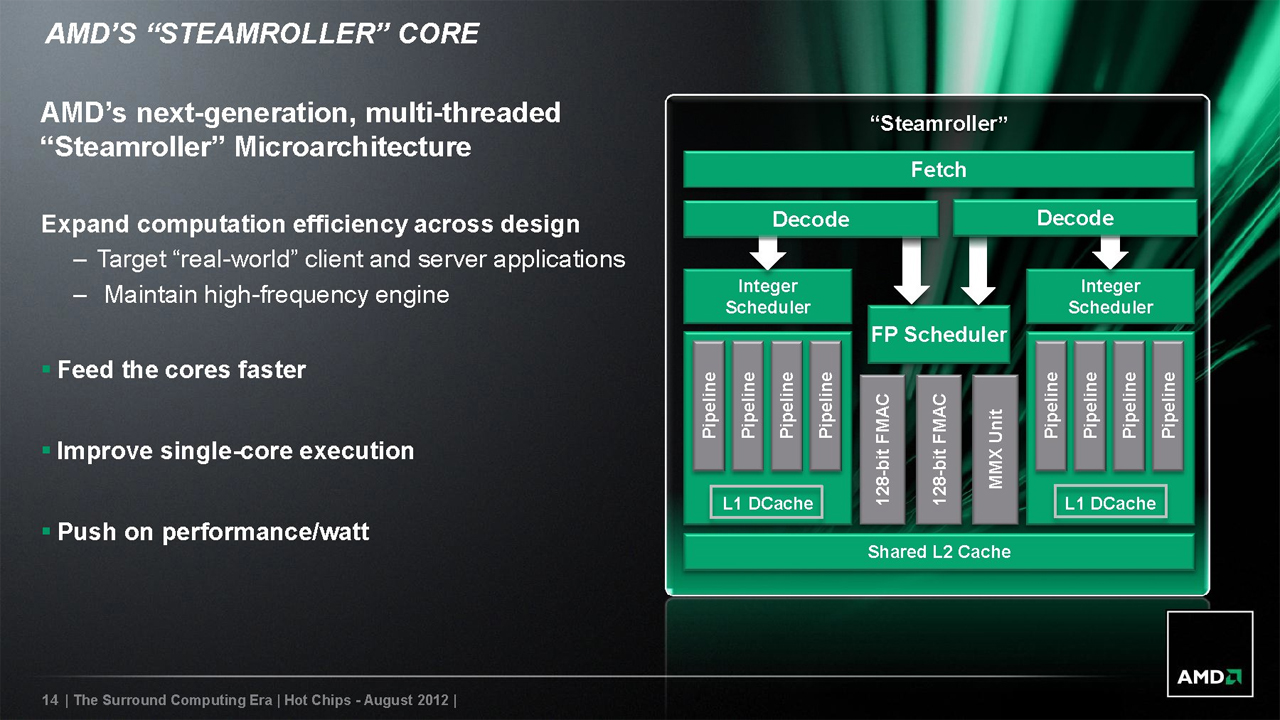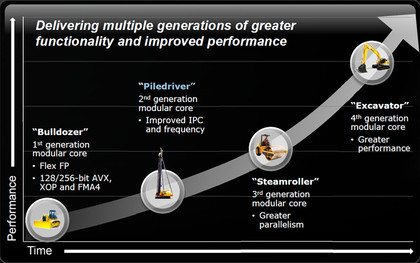Is AMD's Steamroller CPU design the company's last roll of the dice?
Steamroller's success is crucial for AMD

AMD has lifted the lid on its upcoming Steamroller CPU architecture. Due out next year, it's designed to compensate for the shortcomings of AMD's existing Bulldozer PC processors.
For AMD, Steamroller must be one of if not the last roll of the dice in its mortal combat with Intel.
You might think it's a somewhat premature announcement, given that we're still waiting for Piledriver, the follow up to Bulldozer, to land as a performance laptop and desktop processor.
But if my experience with the Piledriver-based Trinity APU is anything to go by, it's not going to dramatically improve AMD's competitiveness.
Being good enough
Actually, you could have a separate debate regarding the relevance of the comparison between AMD and Intel processors. The important thing is having "good enough" performance. Not being better than an arbitrary performance target.
As it happens, I'm planning to have a look at just that very question in the next few weeks. But until then, let's keep up the pretence that performance supremacy matters. Will Steamroller deliver it?
Certainly some of the changes suggest AMD has directly targetted the single biggest problem with existing Bulldozer processors, namely per-core or single thread performance.
Sign up for breaking news, reviews, opinion, top tech deals, and more.
So much for multi-core
It's somewhat ironic in this age of alleged multi-threaded munificence that it was in fact old school single-threaded throughput that let Bulldozer down. But then mainstream PC processing has pretty much levelled off at four cores.
Anyway, the really big change with Steamroller is the switch to independent decode engines for each integer engine in a Bulldozer module. In some ways, that's AMD eating humble pie. After all, the whole point about Bulldozer was supposed to be about clever sharing of architectural components.

Instruction fetch is still shared across a pair of integer units, as it the floating point unit, but Steamroller is a large and significant step closer to having full fat cores. The downside, of course, is more transistors and greater power consumption.
At least it would be if Steamroller was to be built on the same 32nm process as Bulldozer chips. But it will be a 28nm design, neatly offsetting those downsides.
All in the details
Elsewhere, detailed changes have been made, including larger registers, increased L1 cache and a dynamically resizeable L2 cache. How much difference any of this makes remains to be seen. But if anything is going to make Steamroller competitive, it'll be the improved decode resources.
And what if Steamroller doesn't deliver? As one wag on an internet forum recently put it, it will then be followed by the ultimate AMD CPU design, Undertaker, burying the company once and for all.
Admittedly, self-appointed internet sages have been foretelling the demise of AMD for several years now. But if Steamroller isn't any good, it finally finally come true.
Technology and cars. Increasingly the twain shall meet. Which is handy, because Jeremy (Twitter) is addicted to both. Long-time tech journalist, former editor of iCar magazine and incumbent car guru for T3 magazine, Jeremy reckons in-car technology is about to go thermonuclear. No, not exploding cars. That would be silly. And dangerous. But rather an explosive period of unprecedented innovation. Enjoy the ride.